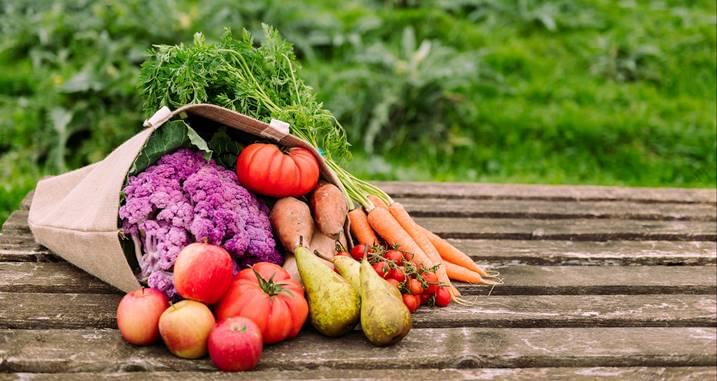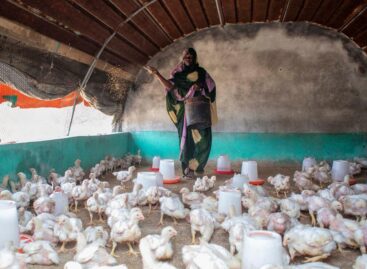Up to 828 million people are suffering from starvation according to FAO
Between 702 and 828 million people in the world faced hunger in 2021. This is about 180 million more people since the beginning of the 2030 Agenda, with much of the increase (150 million) since 2019, before the COVID-19 pandemic. Furthermore, nearly one in three people in the world, around 2.31 billion people, were moderately or severely food insecure in 2021. This is around 350 million more people than in 2019, the year before the COVID-19 pandemic unfolded.

According to 2020, the number of people suffering from hunger has increased with 46 million last year
The 2022 edition of the State of Food and Nutrition report provides new, global data on the subject, and also covers the price and affordability of healthy nutrition. The publication presents the governments’ options for transforming the agricultural support system so that they serve to make healthy nutrition more accessible, taking care of the scarcity of public spending.
The report is a joint effort of the Food and Agriculture Organization of the United Nations (FAO), the International Fund for Agricultural Development (IFAD), the United Nations Children’s Fund (UNICEF), the World Food Program (WFP) and the World Health Organization (WHO).
The numbers are rising concerns:
- Last year, the number of hungry people reached 828 million people – which is an increase of 46 million people compared to 2020 and 150 million people compared to 2019.
- Although the percentage of hungry people stagnated after 2015, it jumped in 2020 and continued to grow last year, currently affecting 9.8% of the world’s population. Last year this rate was 9.3%, the year before that it was “only” 8%.
- Around 2.3 billion people (29.3%) in the world were in the moderately or severely hungry category, their number has increased by 350 million since the outbreak of the COVID-19 epidemic. After an increase of 207 million, the number of severely hungry people reached 924 million (11.7%).
- The gender gap in hunger did not decrease, in fact it increased by 1% after 31.9% of women were affected by hunger in 2021, compared to 27.6% of men.
- Almost half of the world’s population, 3.1 billion people, did not have access to healthy food, while in 2019 this figure was 112 million. The trend reflects the impact of inflation fueled by the pandemic and response measures on food prices.
- An estimated 45 million children under the age of five are malnourished, the most dangerous form of nutritional problems and a 12-fold increase in the risk of death. Another 149 million children under the age of five have insufficient growth and development due to a lack of an essential nutrient, while 39 million are overweight.
- Progress has been made in the field of exclusive breastfeeding, after 44% of infants younger than six months were exclusively breastfed in 2020. But this does not yet reach the 50% goal set for 2030. It is a cause for concern that two-thirds of children do not have access to the varied diet necessary for their healthy development.
- Taking into account current trends, including a possible economic recovery, it is expected that nearly 670 million people (8% of the world’s population) will suffer from hunger in 2030, which is not a big change from the 2015.

Around 2.3 billion people (29.3%) in the world were in the moderately or severely hungry category in 2021
The war in Ukraine, which has involved two of the world’s largest producers of grains, oilseeds and fertilizers, has not yet ended, disrupting international supply chains and driving up the prices of grains, fertilizers and energy, as well as therapeutic food for starving children. All this at a time when supply chains are negatively affected by extreme weather phenomena, especially in low-income countries, predicting further problems in the world’s food security and nutrition.
“This report highlights once again the worsening of the main causes of hunger and nutrition problems: conflicts, climate swings and economic shocks, combined with rising inequalities,” write the heads of UN agencies in the foreword of the report. “The question is not whether weather anomalies will continue, but how we respond to them, increasing resilience to future shocks.”
Agricultural policy reconsidered
According to the report, subsidies to the agriculture and food sector reached an average of $630 billion annually between 2013 and 2018. The lion’s share of the money was targeted at individual farmers through trade and market policies and financial incentives. However, this not only distorts the market, but also does not reach many farmers, damages the environment and does not support the production of food necessary for a healthy diet. This is because subsidies often boost the production of staple foods, dairy products and animal products, especially in high- and middle-income countries. Rice, sugar and meat are the most subsidized foods around the world, while the production of fruits and vegetables is low, especially not in low-income countries.
In anticipation of a possible global recession, given its impact on public revenues and expenditures, supporting economic recovery requires rethinking food and agricultural subsidies to better support increased consumption of nutritious foods.
Evidence suggests that if countries redistributed their resources to encourage the production, trade and consumption of nutritious foods, healthy diets would become more accessible to all.
Related news
FAO: International food prices have been declining since September
🎧 Hallgasd a cikket: Lejátszás Szünet Folytatás Leállítás Nyelv: Auto…
Read more >FAO-Ministry of Agriculture Scholarship Program Continues
🎧 Hallgasd a cikket: Lejátszás Szünet Folytatás Leállítás Nyelv: Auto…
Read more >FAO: 2026 is the International Year of Rangelands and Pastoralists
🎧 Hallgasd a cikket: Lejátszás Szünet Folytatás Leállítás Nyelv: Auto…
Read more >Related news
Power in every sip
🎧 Hallgasd a cikket: Lejátszás Szünet Folytatás Leállítás Nyelv: Auto…
Read more >Protein intake: underrated plant sources in the Hungarian diet
🎧 Hallgasd a cikket: Lejátszás Szünet Folytatás Leállítás Nyelv: Auto…
Read more >The Joy of Giving has begun! – thousands of volunteers are waiting for donations nationwide
🎧 Hallgasd a cikket: Lejátszás Szünet Folytatás Leállítás Nyelv: Auto…
Read more >







